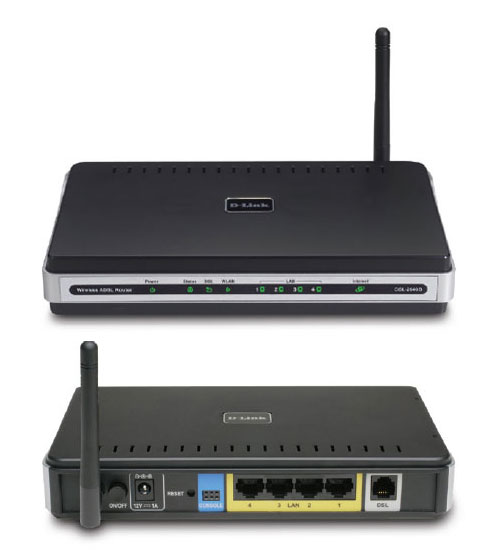Since AT&T is distributing the D-Link DSL-2640B modem/router combo in pretty big numbers, it is necessary from time to time to convince one to stop using PPPoE. Configuration changes beyond bypassing PPPoE are beyond the scope of this article.
- Connect your computer directly to the D-Link. Use a cable, as Wi-Fi masochism is beyond the scope of this document. Browse to http://192.168.1.1/ in the browser of your choice. If your system has assigned itself a 169.mumble address, you will first need to manually assign your computer an IP address like 192.168.1.5, a subnet mask of 255.255.255.0, and a default gateway of 192.168.1.1 to do so.
- You should be challenged for a username and password to proceed. By default these are both set to “admin” and you really ought to change this at some point.
- You should be presented with a Home / Wizard screen. Un-check the box labeled “DSL Auto-connect.” This will allow you to specify the VPI and VCI for your connection. For most ISPs in the AT&T ILEC footprint, this will be 0 and 35 respectively. Click Next.
- You should be prompted to set the connection type. Select the radio button labeled “Bridging” and the pull-down menu option labeled “LLC/SNAP-BRIDGING.” Click Next.
- You will be presented with the Device Setup screen. The default settings will suffice for most home use. Click Next.
- You will be presented with the wireless configuration screen. If you wish to disable wireless for some reason (and should have bought at 2320B instead), un-check the box labeled “Enable Wireless.” Click Next.
- You will be presented with a summary of your configuration. Read it carefully to ensure that it understood you correctly, then click the button labeled “Save / Reboot.” The DSL-2640B will restart, after which you should have Internet connectivity.
If you don’t know the password for your D-Link, you can perform a hard reset (reverting it to factory settings).
- Locate the Reset button on the rear panel.
- With the device powered on (but without network cables plugged in), use a paperclip to hold the button down for 10 seconds.
- Release the button. The modem should reboot.
- Wait about 30 seconds to access the modem as above.

Will I be able to use the Bridging mode and the PPPoE in this router?
I need to get ADSL from the Service provide with VPI VCI 8.35 and IPTV on 8.36. whereas 8.36 should be bridged from the set top box plugged on to a LAN port to the WAN(ADSL) side.
Is it possible in this model?
I am confused with the Telekom Malaysia, they supply for their subscriber a D-Link DSL-2640B exactly same as you D-Link DSL-2640B but the TM Streamyx Modem as if it was reverse purposely the board of the device.
Just got one of these for Sonic.net Fusion service. Had a lot of trouble at first because configuring the device in Bridged mode disabled the NAT/Firewall and made my machines on the internal network with static 192.168.1.### IPs unable to reach the net. Eventually a query to sonic.dsl pointed me in the right direction: enable MER mode instead of Bridged, turn on NAT/firewall, and configure to acquire dynamic IP/gateway/DNS. All happy now!
Why am I not able to connect thru wifi? Direct cable connected to my pc is working well and wlan light on the modem is very stable. Called tm100 to ask but after guiding me to change to a new username did not solve the problem.
Any ideas on what i should do on how to fix this?